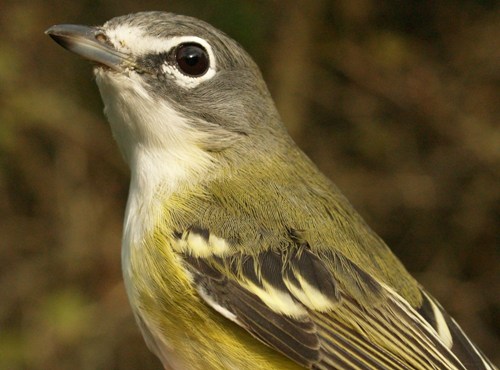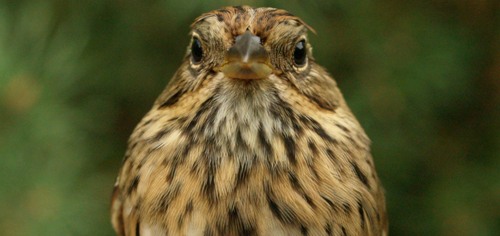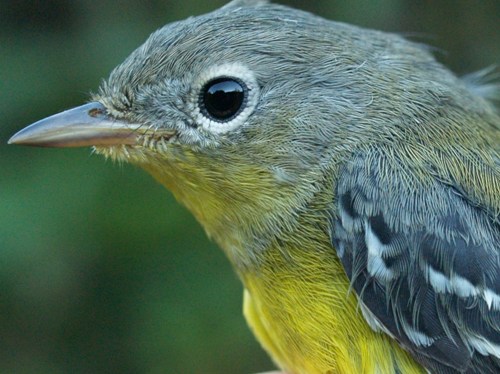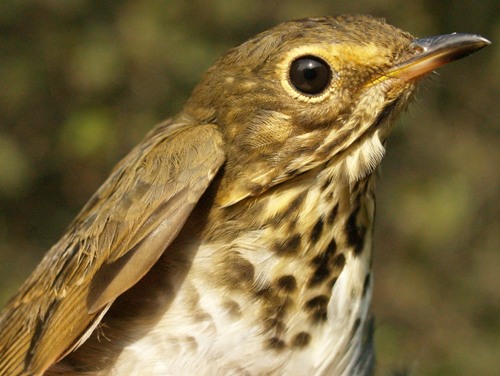|
McGILL BIRD OBSERVATORY |
|||||||||||||||||||||||||||||||||||||||||||||||||||||||||||||||||||||
Welcome
to the McGill Bird Observatory weekly report.
Click here for a complete listing of our archives.
Bander-in-charge: Simon Duval, Gay Gruner Notes: The slow pace of migration from the latter part of week 6 continued throughout most of this week, with a decent pulse of new arrivals only on Friday, the only day this week that we banded over 50 individuals. However, the 217 birds banded this week is only a bit below the six-year average of 252 for week 7, and actually right on the mark for the 2006 through 2010 average (the 426 individuals banded this week in 2005 appears to be quite an outlier, given that the count has ranged from 135 to 297 in other years). This year at least, the slow pace of migration may well be linked to the lingering very warm weather and the corresponding lack of any strong cold fronts pushing birds south.
Despite the relative lull in migration this week, we did observe eight species new for this fall, most notable of which were Bald Eagle (only two previous fall records on 14 September 2005 and 3 October 2010) and Common Tern (just one previous site record on 10 August 2010). We also had our first American Kestrel of fall, while others new this week were largely mid/late-season migrants: Ruby-crowned and Golden-crowned Kinglets, Palm Warbler, Field Sparrow, and Purple Finch. Of these species, the eagle, tern, and sparrow were all new for 2011. The influx of new species this week brings the season total to 120, which matches our six-year average at this time of year. Blue-headed Vireo and Golden-crowned Kinglet were banded for the first time this fall, bringing that tally to 58 species, which remains well below the range of 64 to 66 at this point in all previous years.
The top three species banded are unchanged from last week, reflecting the stable weather system, and marking the first time that the top three spots have all been occupied by warblers this late in the season (and for that matter also the first time that seven warblers have been in the top ten this late in fall). Magnolia Warbler is now up to 219 for the season, the third highest fall total to date, while the new record for Tennessee Warbler has been extended further to 159. Blackpoll and Wilson's Warbler swapped places this week, with both reaching above-average totals for fall. Indigo Buntings continue to be banded in good numbers, making their first ever appearance in the top ten for week 7. The only new addition this week was Gray Catbird, displacing last week's tenth place tie of Cedar Waxwing and Common Yellowthroat. The species most frequently observed this week are also relatively similar to last week's results, with Canada Goose continuing to dominate. Corvid numbers were up this week, with American Crow moving into second place, and Blue Jay jumping up to third. Black-capped Chickadee and Cedar Waxwing remain fixtures in the middle of the list, and the persistent presence of Magnolia Warblers allowed that species to achieve its highest ever ranking for this late in fall. The only new additions to the list this week were White-throated Sparrow and Red-winged Blackbird, both of which we expect to see increase over the coming weeks; Broad-winged Hawk and Song Sparrow were the ones dropping out of the top ten this week. Tennessee Warbler remains on the list for another week, a first for week 7, while American Goldfinch anchors the bottom of the top ten, lower than in any previous year. We have now passed the midpoint of the fall migration monitoring program and remain a bit puzzled as to what kind of a season it will end up being, with some weeks much busier than usual and others atypically quiet. One of the big questions we have been looking forward to answering is whether Yellow-rumped Warblers will follow the trend of the past six years, with a relatively low count following a year with a "bumper crop" of them. Given that we banded a record 2359 Yellow-rumped Warblers last fall, it seems hard to believe they will drop back down to the "even year" average of 110, but we have been surprised before ... the next couple of weeks should begin to tell that story.
|




